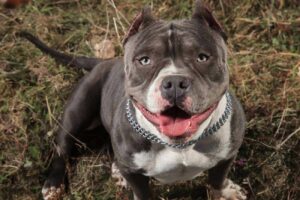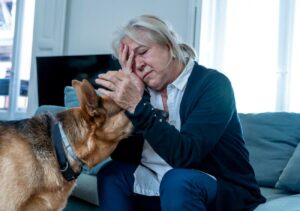If you are thinking about buying a dog, you really need to consider your home environment before choosing. For example, not all environments are suited for larger dogs.
A friend of mine desperately wanted a dog but the dog breeds she liked were a bit too large for her apartment.
Larger dogs tend to need space to run, like a backyard. Two examples are the Caucasian Shepherd and the Tibetan Mastiff. While they are similar in many ways, there are also differences to consider.
So how do you know which breed is best for you?
Both breeds have similarities as well as a few differences that you may want to consider before buying or adopting them. We'll go through everything that you need to know about Caucasian Shepherds and Tibetan Mastiffs to help you choose.
Both of these breeds were bred for protection and they do their job well! They can be a bit of a challenge though, and may not be the best dog to have as your first dog.
This is because they both will need training throughout their lives. They are also more suited to homes with plenty of room and open space for exercise.
What Does a Caucasian Shepherd Dog Look Like?
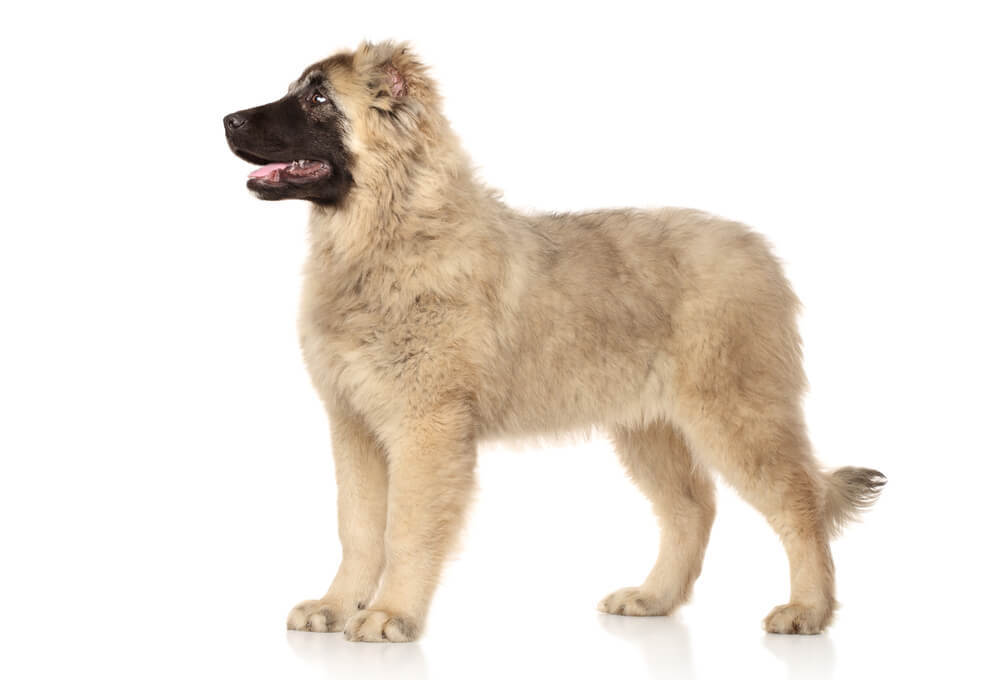
A 5-month old Caucasian Shepherd puppy.
Take Note
Caucasian Shepherds have gone by many other names: Caucasian Ovcharka, Caucasian Sheepdog, Kawkasky Owtscharka, and Kaukasische Schaferhund.
Caucasian Shepherds can weigh from 100 to 170 pounds, however, there have been some to hit the 200-pound mark. It's one of the “Giant Breed” of dogs. They have a fluffy coat that sheds quite a bit. In fact, their coats have three varieties; long, medium, and short.
Because they were bred as herding dogs in the Himalayas and Caucasus mountains, they have a double coat to help keep them warm. Color-wise, they lean more towards lighter shades of brown, black, red, or gray and they can be a solid color or a mix.
Caucasian Shepherds are stocky, muscular, strong-boned, and have an athletic build. They have large heads and legs that are powerful for running.
What Does a Tibetan Mastiff Dog Look Like?
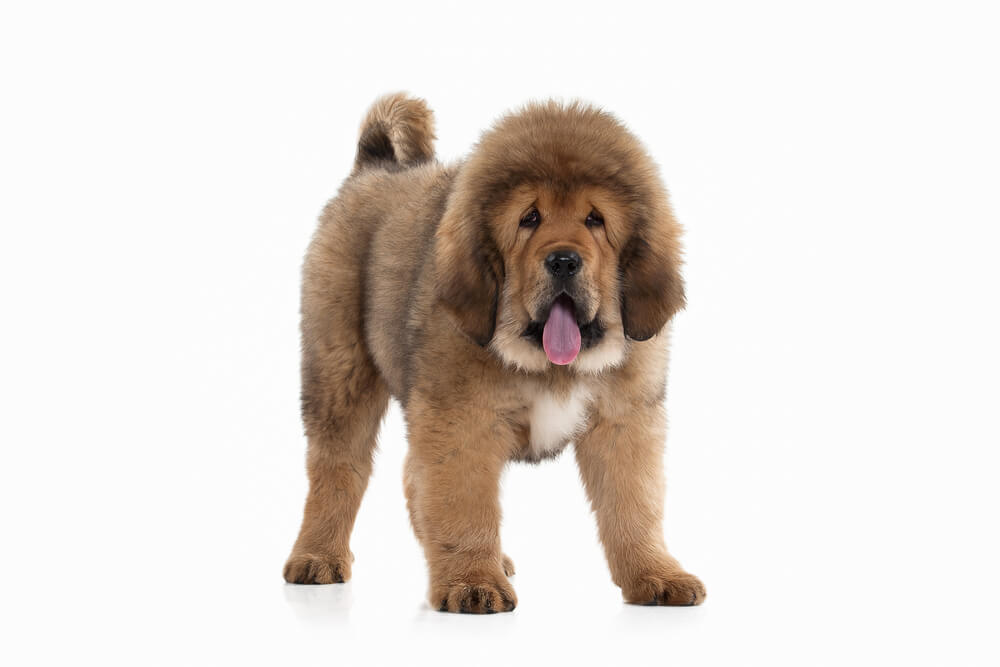
A Tibetan mastiff puppy.
Tibetan Mastiffs (TMs) are a bit smaller in size when compared to Caucasian Shepherd dogs, but they are still considered to be a large breed. They tend to weigh between 70 to 150 pounds.
Their coats only come in one variety...very fluffy, which can make them look larger than they are. Like the Caucasian, they have a double coat for warmth and tend to have darker shades of black, brown, red, and gray.
They have an almost lion-like appearance. Under all of that fur is a well-muscled, athletic body with strong legs.
Basic Stat Matchups
Wondering how Tibetan Mastiff and Caucasian Shepherd match up when it comes to their vital statistics and general bred characteristics?
Here's an overview of those 'stats' at a glance:
Caucasian Shepherd
- Height: 23 to 30 inches
- Weight: 100 to 200 pounds
- Lifespan: 10 to 12 years
- Shedding: Sheds a lot
- Color variations: Lighter shades of solid or mixed brown, gray, red
- Temperament: Loyal, fearless, bold
- Cost: Starting at $1,000 and higher
Tibetan Mastiff
- Height: 24 to 28 inches
- Weight: 70 to 160 pounds
- Lifespan: 10 to 12 years
- Shedding: Sheds a lot
- Colors variations: Darker shades of solid or mixed black, brown, gray, red
- Temperament: Intelligent, independent, reserved
- Cost: Starting at $1,500 and higher
Caucasian Shepherd vs Tibetan Mastiff: The Basics Explained
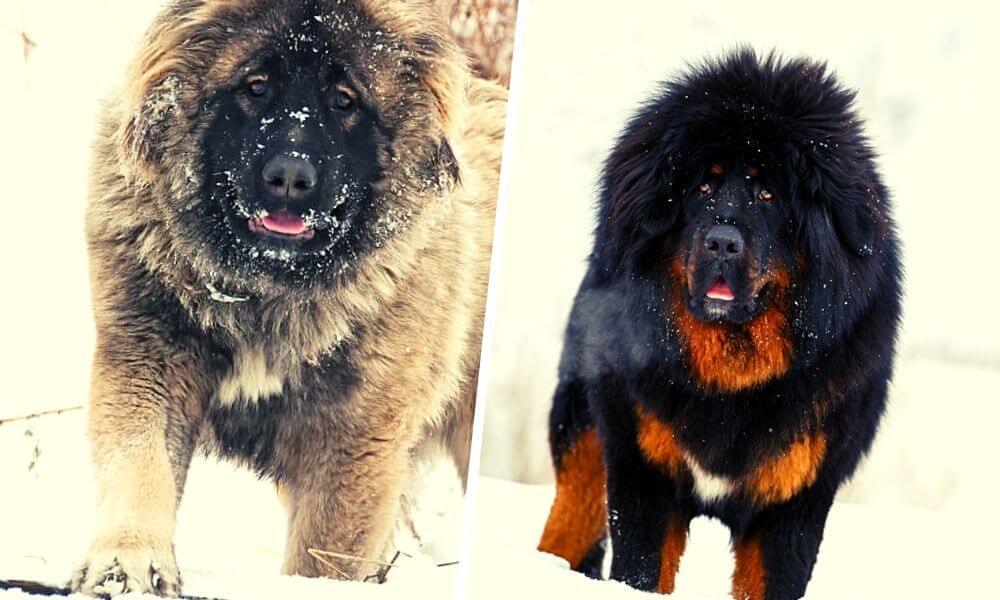
Caucasian Shepherd Dogs vs Tibetan Dog Side by Side
History
Both of these dog breeds were bred for herding and protecting. While they have their own history, they are believed to be related in some way.
The Caucasian dog is part of the ancient Molosser type, dating back about 2,000 years. Originally from the Caucasus Mountain range that runs between Europe and Asia, this ancient dog breed was bred to watch over flocks of sheep and cattle and protect them from bears, wolves, and poachers.
They were also bred to protect their human family and were often used to protect military personnel.
The Tibetan Mastiff has a bit of a mysterious background due to them coming from Tibet, an area that is closely guarded and isolated. They were bred to be the protectors of Himalayan Temples.
They worked in tandem with the smaller Lhasa Apsos breed, who would alert the Tibetan Mastiff of danger. The TM made its way to other locations because they were often given as gifts to those who traveled to the temples.
Temperaments
Both of these breeds are cautious and were bred to be protective with great guarding skills, qualities that they have retained throughout time. While they will spring to protect their human family, they don't attack unless it is necessary.
They have been known, however, to take down wolves and bears. One trait to take seriously with both breeds is their territorial nature, which will need training.
They have both been poorly labeled as ferocious breeds, but this is mostly down to bad training. When trained the right way, they are big lumps of affection and love, often referred to as gentle giants.
They can also be a bit on the lazy side but do love to be outdoors. In fact, both tend to be happy being outside.
Cost
The cost of both breeds will depend on the breeder or shelter that you adopt from. Starting prices for a Caucasian Shepherd pup are about $1,000 and $1,500 for a Tibetan Mastiff pup. Make sure that you use a reputable breeder who has experience raising territorial breeds.
Both breeds can be rare to find if you are looking to adopt one from a shelter. However, you can visit the Tibetan Mastiff Rescue website, which works to re-home this breed.
Grooming
Both breeds have very fluffy coats and will need to be brushed daily to keep their fur from becoming matted and tangled. It will not only help remove dirt from their coats, but it will also help spread the dog's natural oils throughout the coat, much like our hair.
They shed a lot and you will need to do de-shedding weekly and use a shampoo that is anti-shedding like the FURminator deShedding Shampoo.
This will cut down the dander in their fur. Saying that both breed's coats are not considered hypoallergenic so may not be a good choice for those with pet allergies.
Here’s a helpful video with a basic grooming guide on brushing and combing of a Tibetan Mastiff dog.
You will need a good de-shedding tool and a brush that is slick to help brush through their coats, and they should be given a bath every 6 to 8 weeks.
Average Lifespan
The Caucasian tends to come from strong and hardy stock and can live between 10 to 12 years.
The Tibetan Mastiff is also a fairly healthy breed and can live between 10 to 14 years.
Trainability
Both breeds are territorial and can be independent and stubborn when it comes to training. They are definitely not suited to novice dog owners. Basically, if they don't feel like training, they will ignore you.
The trick here is to use food when training because both are food orientated.
Socializing them needs to happen very early to be sure that they don't become overly protective and aggressive around the home. Once outdoors, they mellow out more, so they need to be taken outside into unfamiliar areas regularly.
Training these breeds is a lifelong project and they need someone with a firm hand, otherwise, they feel they are the leader of the pack and this can cause behavioral issues. Obedience training is a must.
Barking
Caucasian dogs tend to bark only when they feel there is danger about. Their bark can be loud though, especially when they are kept outside and sense danger in the middle of the night.
This is why they should be kept indoors with their family often.
A Tibetan Mastiff is a bit freer with its barking and their bark is booming and deep. If you keep them outdoors, they will periodically bark to let you know they are doing their job, especially at night. However, they tend to be quieter during the day.
Exercise Needs
Both breeds are considered to be low maintenance when it comes to their exercise habits.
They don't require intense activity or interaction. However, they do need regular exercise for their mental and physical well-being.
They will need walks of about 45 minutes to an hour a day. They also prefer a large yard to explore than intense runs or interactive games.
Behavior with Small Children and Other Pets
Both breeds will develop strong bonds with family. The Caucasian is known for its gentleness around children that they know. The same goes for other pets, as long as they have been properly introduced.
What you need to be aware of is that children and pets that are unfamiliar can be seen as a threat. They do best in homes that have older children.
The Tibetan Mastiff will also form a strong bond with family, but they tend to not be very affectionate dogs.
They will get on well with pets and children that they have grown up around, but they can often take the loud playing, crying, and yelling as a sign of aggression.
Because of this, they aren't a good choice in homes that have small children.
Health Problems
Both breeds are relatively healthy. However, like many big dog breeds, the Caucasian and Tibetan Mastiff are at risk of developing hip dysplasia that can lead to arthritis pain and issues with mobility as they get older.
Both have a rapid rate of growth as puppies and both can be susceptible to Panosteitis and Osteochondrosis Dissecans. Obesity is another concern due to their ability to eat a lot but exercise very little.
The Tibetan Mastiff can suffer from an inherited disease called, Canine Inherited Demyelinative Neuropathy, found only in Tibetans.
It's an issue that can lead to paralysis of the back legs over time. It isn't an issue that can be treated and selective breeding is used to try to avoid this issue.
Food and Diet
Both breeds will eat about 4-6 cups of food per day.
The Caucasian Shepherd tends to have a more sensitive stomach though and requires food that is of high quality. Your best bet is foods that are meant for larger dog breeds as these cater to the nutritional needs of large dogs.
One thing to keep in mind is to not feed them right before or after exercise. This can lead to Bloat, which can be fatal.
Should I get a Caucasian Shepherd?
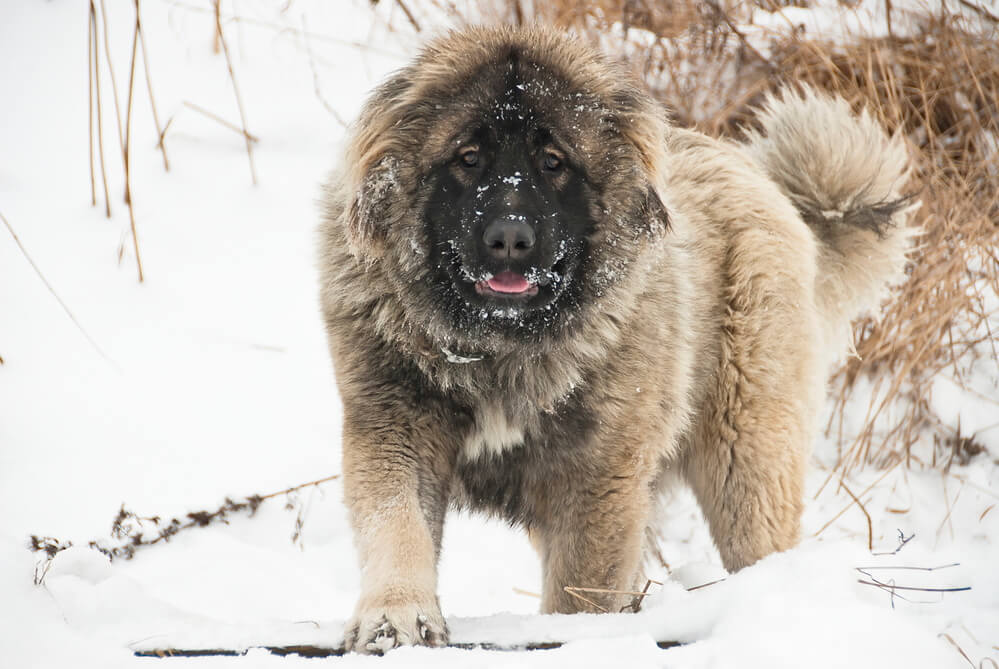
A fluffy adult Caucasian Sheepdog at winter.
Caucasian Shepherds are best suited in homes where someone is able to spend the time needed for training. This is an intelligent breed but not the best option for a first-time dog owner due to its independent nature.
While this breed is gentle around children, its size could be an issue around smaller children who can easily be knocked over. So, the Caucasian Shepherd will do better around older children.
It's also not a good choice for smaller homes or apartments because they need their space to not only move around but for quiet time too. They are happiest when they are outdoors, so a home with a large yard to explore is best.
Should I get a Tibetan Mastiff?
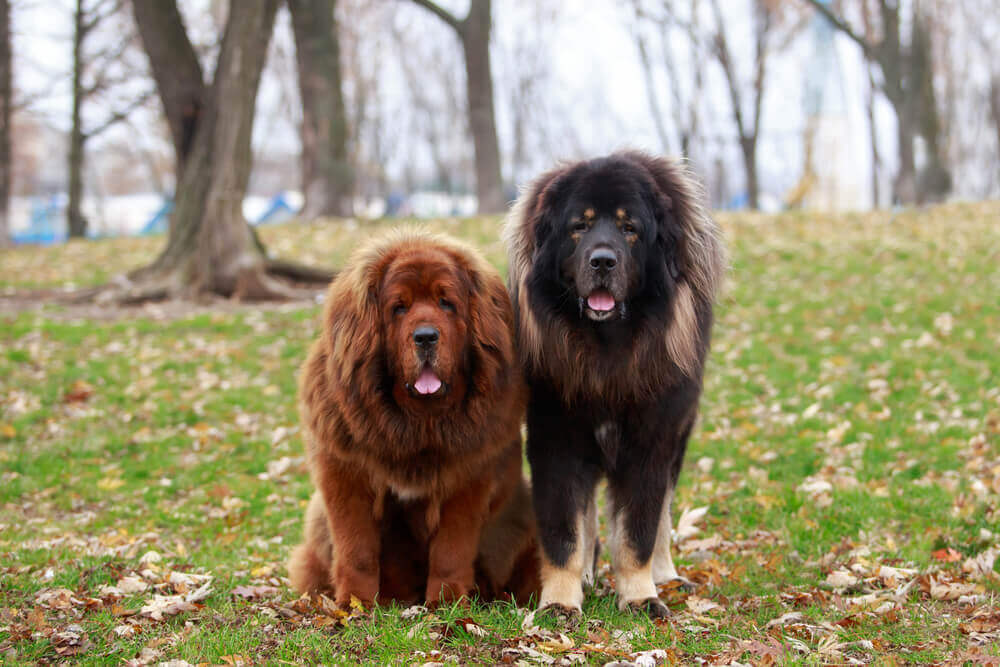
Red and black-coated Tibetan Mastiff dogs.
Tibetan Mastiffs are best suited for individuals and families who can devote the time and energy needed to train them. They need a moderate amount of playtime and early training.
They will get along great with other pets and children if they have been raised around them, but it isn't recommended that they be in a house with small and noisy children.
They are more suited to owners who can get out and about and homes that have space and a large yard to roam in. They aren't suited for apartment living. Trained properly, they can be a great addition to your family.
Other dog breed articles you might be interested in

